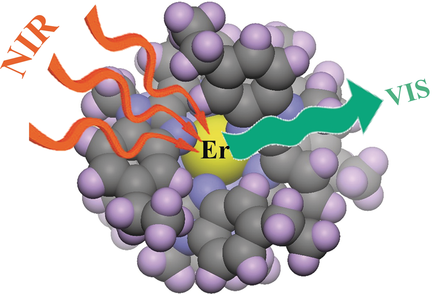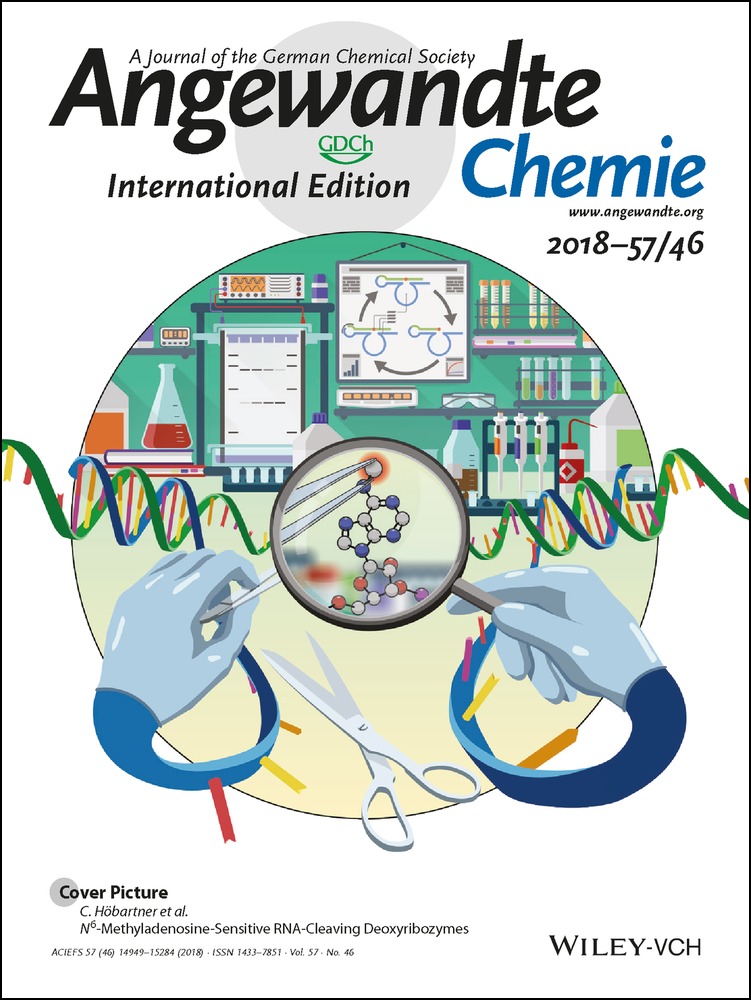Room-Temperature Linear Light Upconversion in a Mononuclear Erbium Molecular Complex
Graphical Abstract
Abstract
To date, the piling up of successive photons of low energies (near infrared; NIR) using a single lanthanide center and linear optics to ultimately produce upconverted visible emission was restricted to low-phonon solid materials and nanoparticles. Now we show that the tight helical wrapping of three terdentate N-donor ligands around a single nine-coordinate trivalent erbium cation provides favorable conditions for a mononuclear molecular complex to exhibit unprecedented related upconverted emission. Low power NIR laser excitations into the metal-centered transitions Er(4I11/2←4I15/2) at 801 nm or Er(4I13/2←4I15/2) at 966 nm result in upconverted blue–green emissions, where two or three photons respectively are successively absorbed by a molecular lanthanide complex possessing high-energy vibrations.





